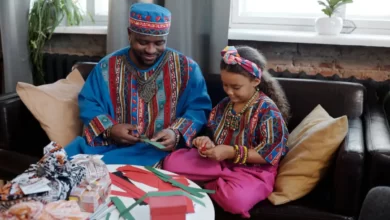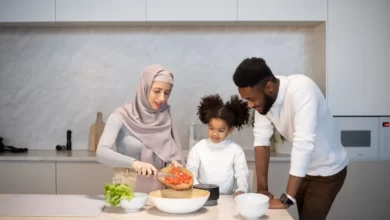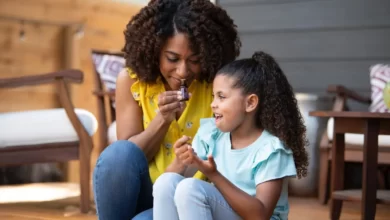In a world that often emphasizes personal success and achievement, it’s crucial to instill empathy and kindness in our children from a young age. As parents and caregivers, we have the power to shape the next generation into compassionate individuals who understand and care for the feelings of others. Teaching empathy and kindness goes beyond simply instructing children to be nice; it involves cultivating a deep sense of understanding, connection, and a genuine desire to make a positive impact on the world around them.
The Foundation of Empathy
Empathy is the ability to put oneself in someone else’s shoes, to feel what they feel, and to understand their experiences and emotions. It’s a fundamental skill that forms the basis of meaningful human connections and relationships. Children are naturally curious and open-hearted, making them receptive to learning about others’ perspectives. As parents, it’s our role to nurture this innate capacity for empathy and help children develop it into a lifelong trait.
Modeling Empathy
Children learn by observing the behaviors and attitudes of the adults around them. Therefore, one of the most effective ways to teach empathy is by modeling it ourselves. Demonstrate kindness and consideration in your interactions with family members, friends, and even strangers. Show empathy towards your child’s emotions, validating their feelings and teaching them that their experiences matter.
Share your own stories of helping others or recount instances when someone’s compassion made a difference in your life. These stories can inspire your child to see empathy as a powerful force for positive change. Remember, your actions speak louder than words, and by modeling empathy, you set a powerful example for your child to follow.
Developing Perspective-Taking Skills
A cornerstone of empathy is the ability to understand another person’s perspective. Engage your child in discussions that encourage them to see things from different viewpoints. For example, when reading books or watching movies, ask questions like, “How do you think that character is feeling?” or “Why do you think they made that choice?” Encourage them to step into the shoes of different characters and imagine their emotions and motivations.
Engaging in activities that involve role-playing or pretending can also help children develop their perspective-taking skills. This might involve taking turns pretending to be different characters or imagining scenarios from various angles. This practice not only enhances empathy but also nurtures creativity and cognitive flexibility.
Cultivating Kindness Through Action
While understanding others’ perspectives is important, it’s equally vital to translate that understanding into action. Teach your child that empathy is more than just feeling sorry for someone—it’s about taking steps to make a positive impact. Engage in acts of kindness together, whether it’s volunteering as a family, helping a neighbor, or even just making a homemade card for someone who could use a smile.
Involve your child in decisions related to acts of kindness. Let them choose a cause or person they’d like to help. By giving them agency, you empower them to make a difference in ways that resonate with them personally.
Encouraging Open Conversations
Create an environment where your child feels comfortable discussing their emotions, thoughts, and questions openly. Encourage them to share their feelings and experiences, and listen attentively without judgment. When they encounter situations that challenge their understanding, use these moments as opportunities for meaningful conversations.
Ask open-ended questions like, “How do you think that person felt?” or “What would you do if you were in their place?” Encourage them to reflect on their responses and explore different ways to respond with empathy and kindness.
Empathy-Building Media
Media, including books, movies, and TV shows, can be powerful tools for teaching empathy. Choose media that features diverse characters and situations, allowing your child to see the world from various perspectives. After consuming media, have discussions about the characters’ emotions, motivations, and the lessons they learned.
Consider also sharing news stories that highlight acts of kindness or challenges faced by others around the world. This can spark conversations about global empathy and the importance of caring for people beyond our immediate circles.
Managing Conflict and Difficult Emotions
Teaching empathy also involves helping children navigate conflicts and difficult emotions. Teach them effective communication skills, active listening, and problem-solving techniques. Encourage them to express themselves calmly and to consider the feelings of others during disagreements.
Modeling how to handle frustration, disappointment, and other challenging emotions with empathy can guide children in managing their own feelings and responding compassionately to others.
Celebrating Empathy and Kindness
Celebrate your child’s empathetic and kind actions. Create a “kindness jar” where you can collectively document acts of kindness your child engages in. This visual representation of their compassionate choices can serve as a reminder of their capacity to make the world a better place.
Praise their efforts in practicing empathy and kindness, focusing not only on the outcome but also on the intention and effort they put in. Positive reinforcement reinforces these behaviors and encourages them to become intrinsic values.
The Journey of Lifelong Learning
Teaching empathy and kindness is not a one-time lesson; it’s a lifelong journey. Children’s understanding of empathy evolves as they grow and encounter new experiences. Continue to engage in conversations, read books, and explore opportunities to practice empathy together. By nurturing these qualities, you’re not only raising compassionate children but also contributing to a more empathetic and understanding society—one small act of kindness at a time.









